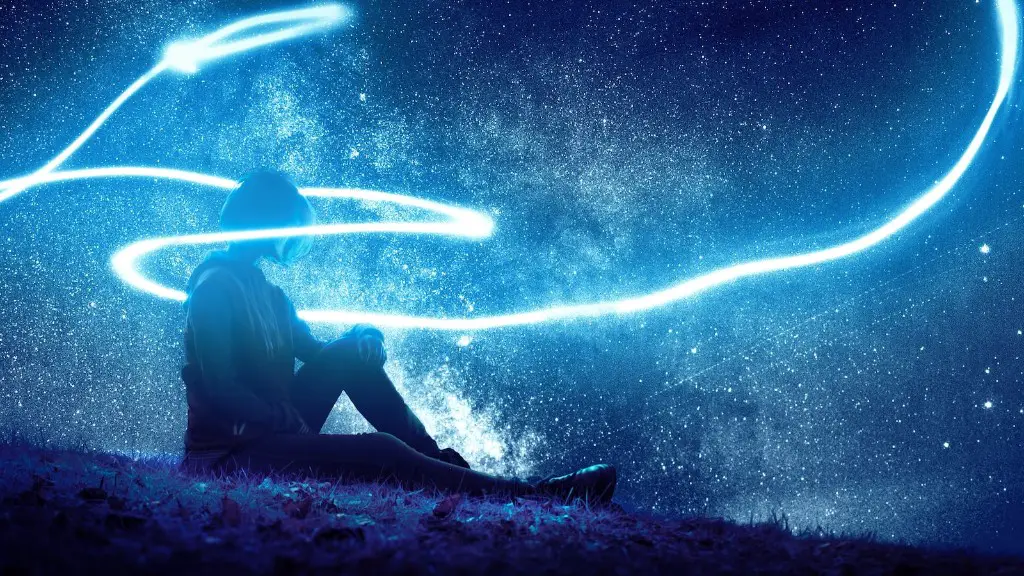There are a variety of opinions on what blind people see in their dreams. Some believe that blind people dream in complete darkness, while others believe that they may see flashes of light or colors. There is no scientific evidence to support either opinion, but many experts believe that blind people do dream.
As far as we know, blind people see in their dreams just as we see in ours. They “see” the images formed by their sleeping brains in the same way that we see the images formed by our brains. Just as our dreams sometimes make no sense, neither do theirs.
What do blind peoples dreams look like?
Blind people do dream in visual images, but not as often or intensely as sighted people. Instead, they dream more often and more intensely in sounds, smells, and touch sensations.
Blind people do not sense the color black, just as we do not sense anything at all in place of our lack of sensations for magnetic fields or ultraviolet light. We don’t know what we’re missing. To try to understand what it might be like to be blind, think about how it “looks” behind your head.
Can a deaf person hear in their dreams
The research found that people who are deaf or hard of hearing do dream and that they do hear sounds in their dreams. The study found that the participants with hearing impairments dreamed about the same topics as those who could hear. The study showed that people who are deaf or hard of hearing are able to dream and that their dreams are not different from those of people who can hear.
There is a widespread belief that the human brain is incapable of “creating” a new face. Every person you dream of is someone you have either known personally or merely came across looking through your friend’s Facebook photos. However, recent studies have shown that this may not be the case. It is possible for the brain to generate new faces, albeit very rarely.
What do 100% blind people see?
A person who is totally blind will not be able to see anything, while a person with low vision may be able to see light, colors, and shapes. However, someone with low vision may have difficulty reading street signs, recognizing faces, or matching colors to each other.
Just because someone is blind does not mean they cannot experience sexual attraction. Blind people can and do have happy and successful sexual relationships. There is no difference between them and anyone else when it comes to this.
Is being blind like being in the dark?
Blindness is not being in the dark. There are many different types and degrees of blindness, but all involve some level of impairment to the individual’s ability to see. In some cases, blind individuals can see large objects but their vision is out of focus, while some others may see colors. Seeing the different sources of light, called light perception, is another form of blindness, alongside tunnel vision and many more.
People have several dreams each night, but probably forget about 95 percent of them. Dreams are a normal part of sleep. They are a combination of images, emotions, and thoughts that happen during sleep. Dreams can be pleasant, disturbing, or just strange.
Here are 10 more fascinating facts about dreaming:
1. People usually have about four to six dreams each night.
2. Dreams can last for a few seconds, or up to 20 minutes.
3. Most dreams occur during Rapid Eye Movement (REM) sleep.
4. Dreams are believed to help process emotions and memories.
5. Dreams may be a way to work through problems or anxieties.
6. Some people dream in black and white, while others dream in color.
7. lucid dreaming is when a person becomes aware that they are dreaming.
8. Some people claim to have prophetic dreams.
9. night terrors are a type of sleep disorder that can cause people to scream or shout during sleep.
10. Most people forget about 90% of their dreams.
Can you hear yourself in your head if you’re deaf
There is a common misconception that deaf people think in signing because that is their primary mode of communication. However, research has shown that deaf people actually think in their own inner voice, just like hearing people. This is because sign language is primarily a visual language, and the brain processes visual information differently than it does auditory information. Therefore, deaf people primarily think in their own inner voice, which is experienced as signing in their heads.
There is no need to worry about sleep hallucinations. They are thought to occur due to your brain being partly in a dreaming state. Normally, sleep hallucinations are visual, but they can also be auditory. If you are hearing a voice or voices, they will usually be saying something brief, such as your name.
Can you feel pain in dreams?
Although pain is not a common sensation in dreams, it can occur in both healthy individuals and those who are suffering from acute, severe pain. This suggests that pain may be part of the dreaming world for some people. However, more research is needed to understand the role of pain in dreams.
MCH cells are thought to be responsible for dreams. Dreams primarily occur during REM sleep, when these cells are turned on. Therefore, activation of MCH cells may prevent the content of a dream from being stored in the hippocampus – as a result, the dream is quickly forgotten.
Why do we remember some dreams
It is more likely that you will remember a dream that you have in the close-to-waking sleep hours than one that happened right after you went to bed. This is because, as we sleep, the REM portion of our sleep cycle becomes longer, and we’re more able to remember those dreams. So if you want to remember your dreams, try to wake up during the REM portion of your sleep cycle.
There are a few key differences between blind and sighted persons in terms of working memory. Blind persons tend to score 14 IQ points higher, whereas visually impaired persons only score 3 IQ points higher. This difference may be due to the fact that blind persons have to rely more on their memory when navigating the world, while visually impaired persons may be able to rely more on their vision. Additionally, blind persons may have better verbal comprehension skills, while visually impaired persons may have better visual comprehension skills.
Who is the most famous blind person?
Helen Adams Keller was a remarkable woman who overcame great obstacles in her life. She was the first deaf-blind person to earn a bachelor of arts degree, and she was a prolific writer and political activist. Her example continues to inspire people all over the world.
Caramazza’s research shows that blind people can form rich and accurate concepts of color, even though they lack the sensory experience of it. This is due to the fact that language can communicate the experience of color, even to those who cannot see it. This is an important finding, as it shows that language can be used to communicate complex concepts, even to those who cannot experience them directly.
Final Words
There is no definitive answer to this question since it can vary from person to person. Some people who are blind from birth may report seeing “colorful patterns or shapes” in their dreams, while others who have lost their sight later in life may see images that are more similar to what they remember from before they were blind. It is also worth noting that some people who are blind may not see anything in their dreams, while others may see images that are not based on any real-world visual experience.
There is no one answer to this question as everyone experiences dreams differently. However, it is generally accepted that blind people do see images in their dreams. It is thought that these images are created from the person’s memories and imagination, as they are not able to see external stimuli.





